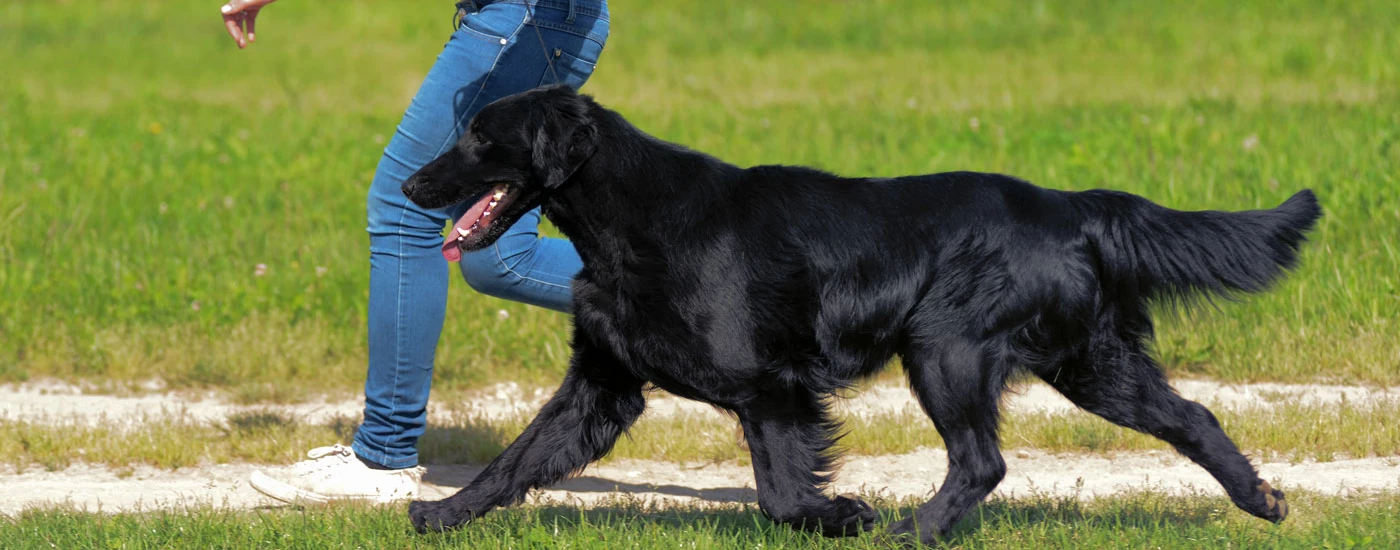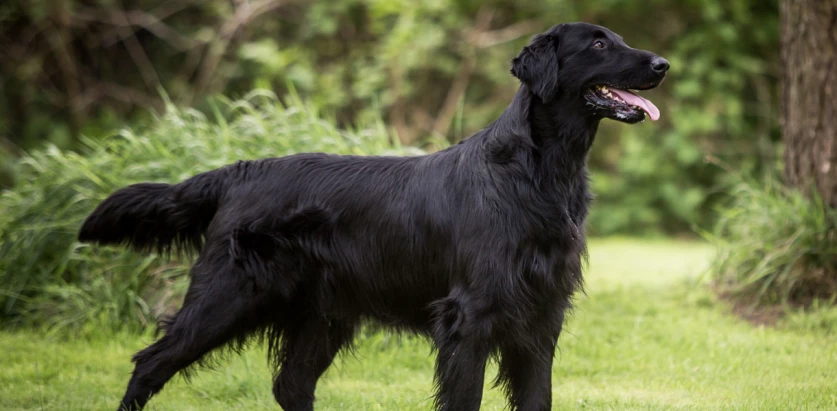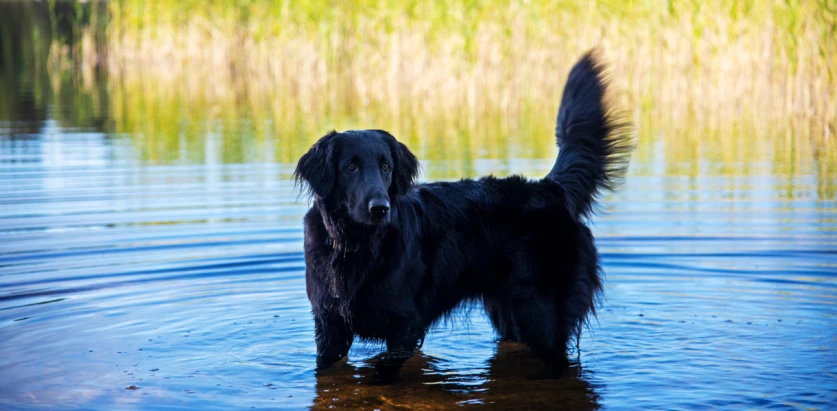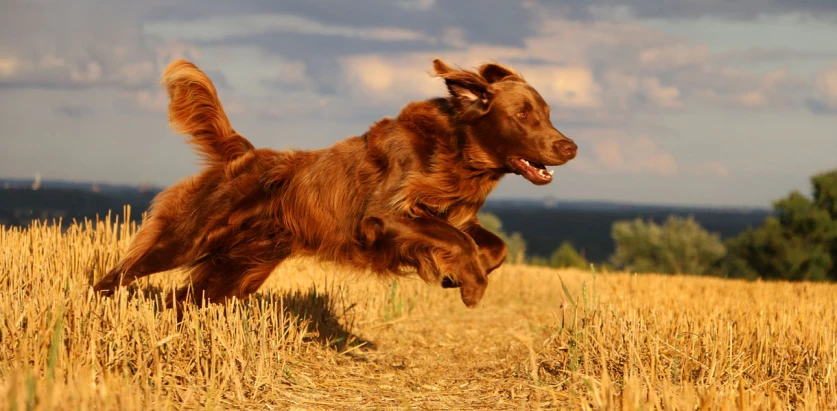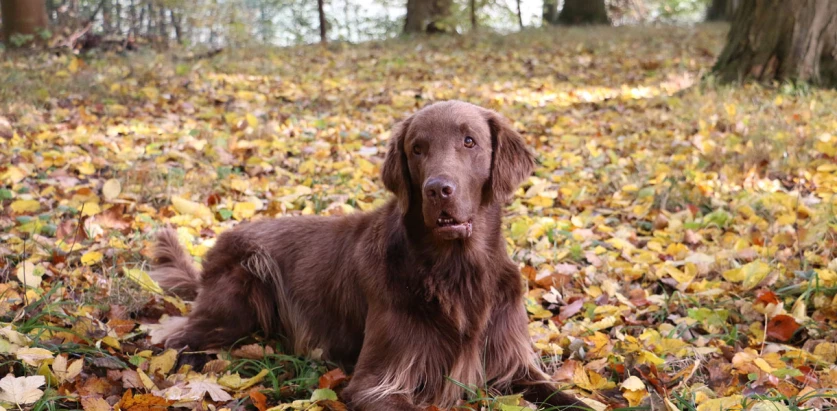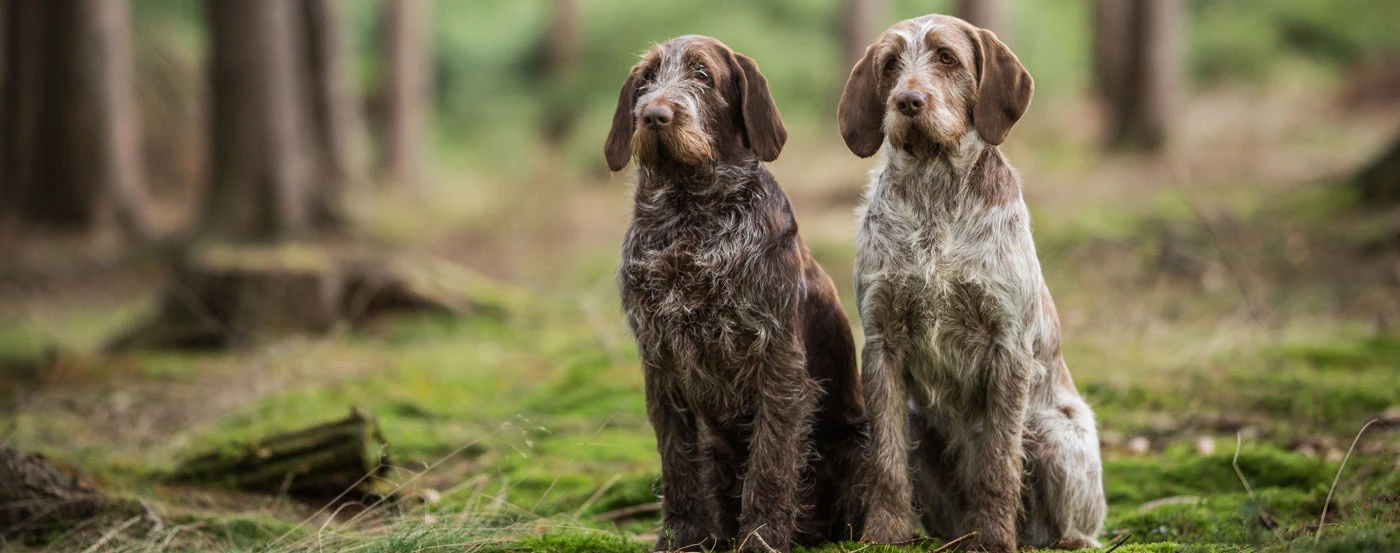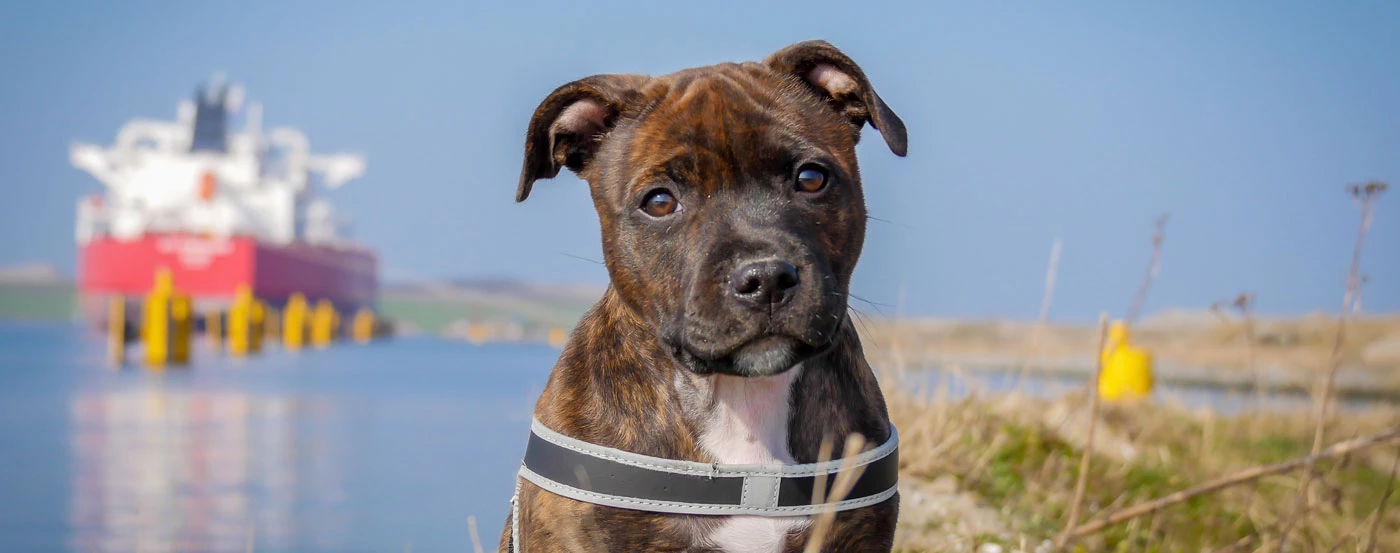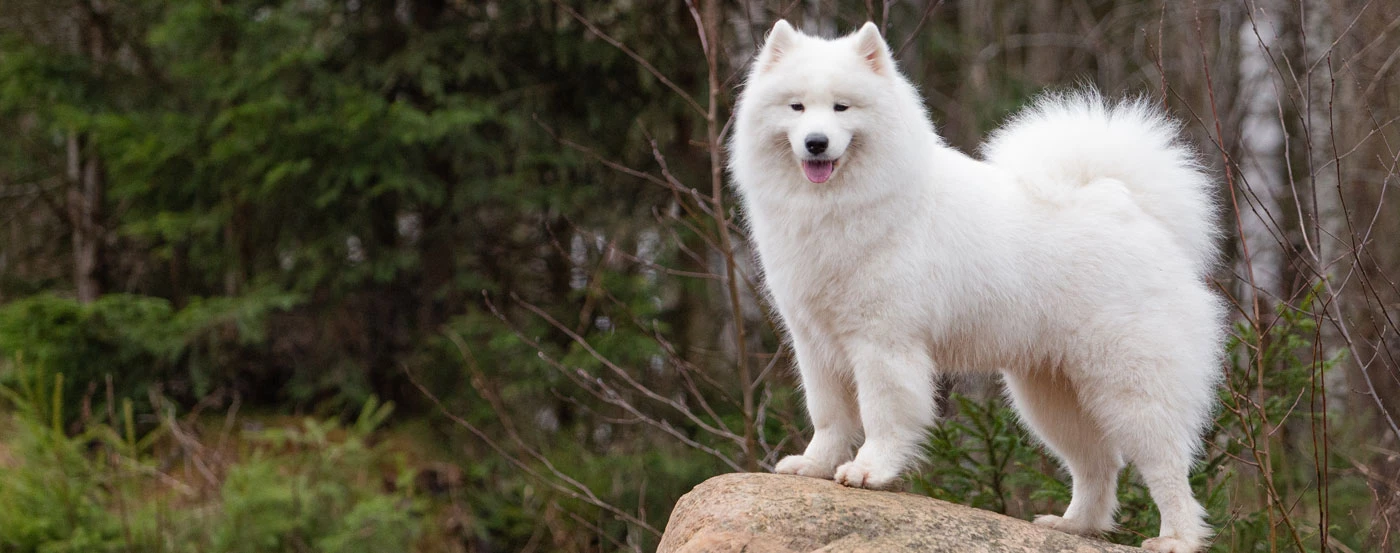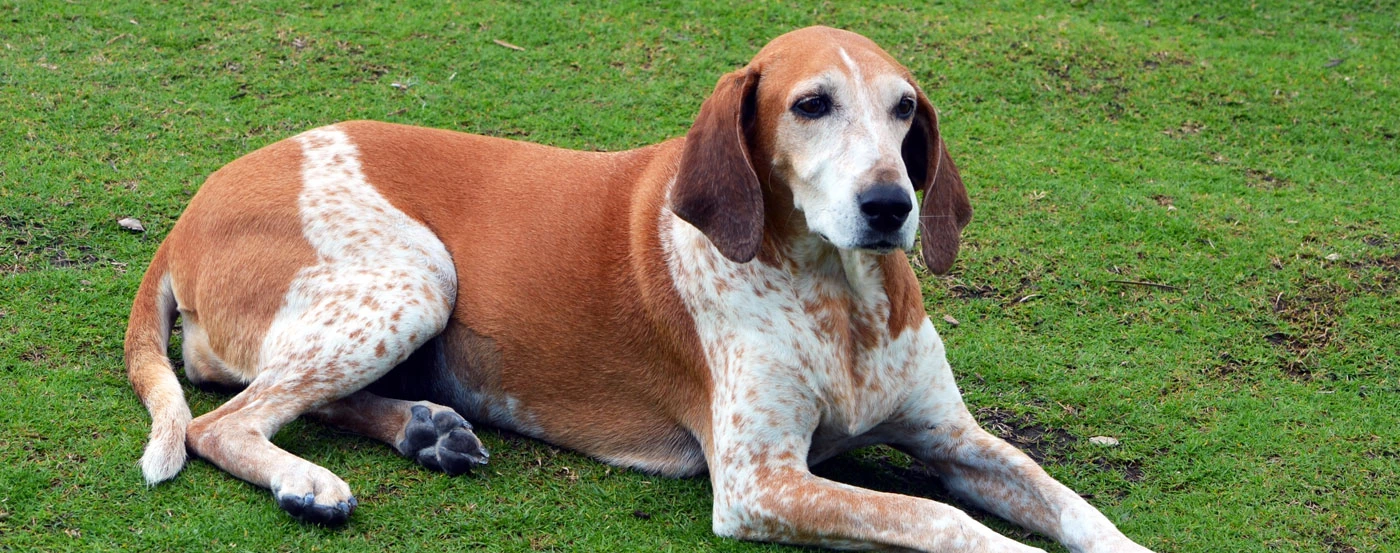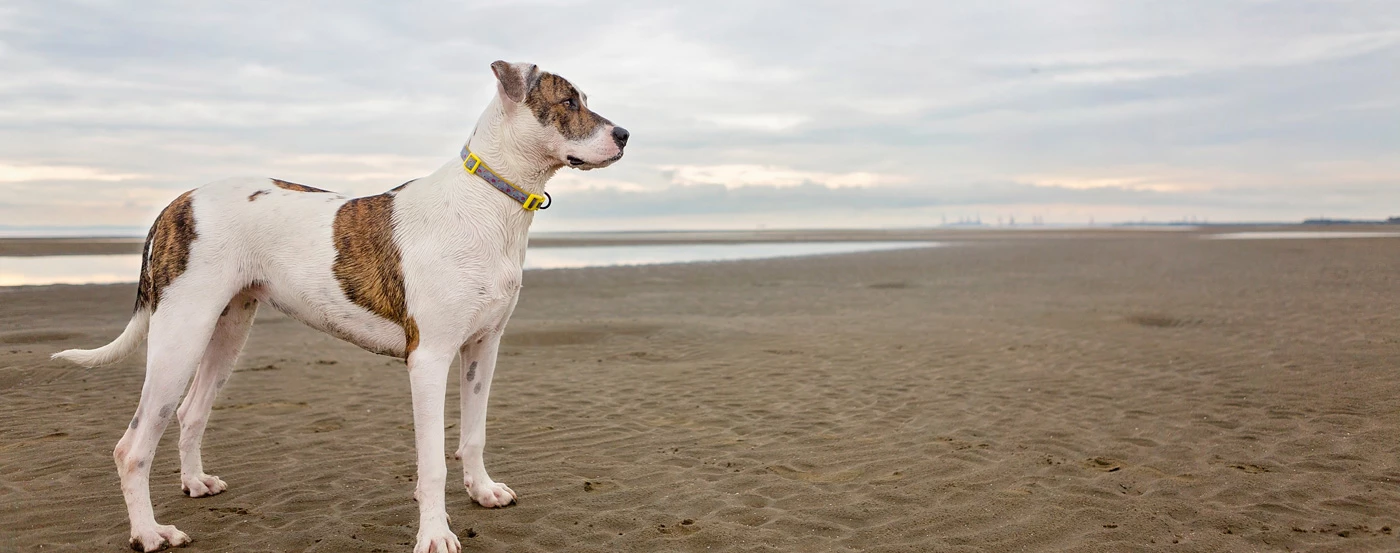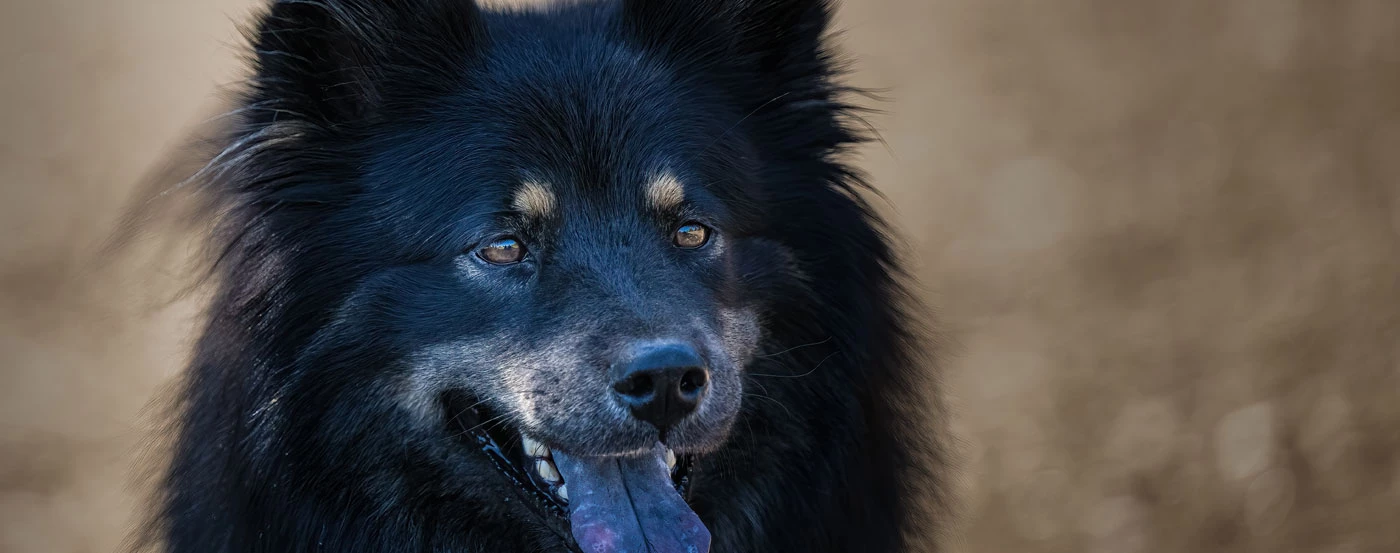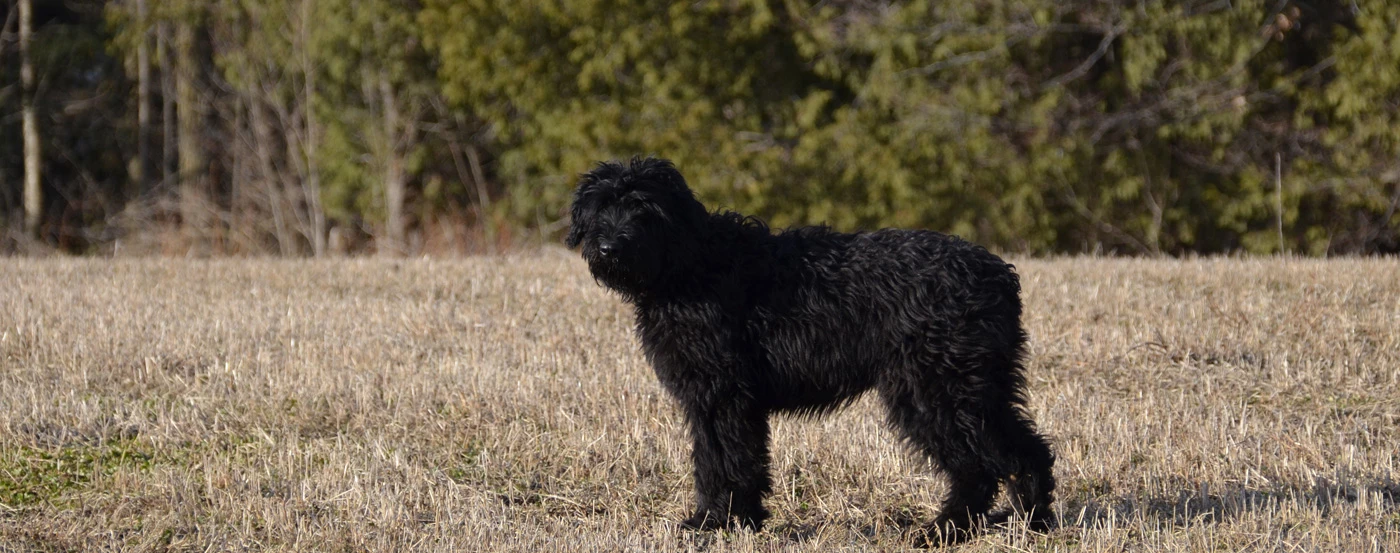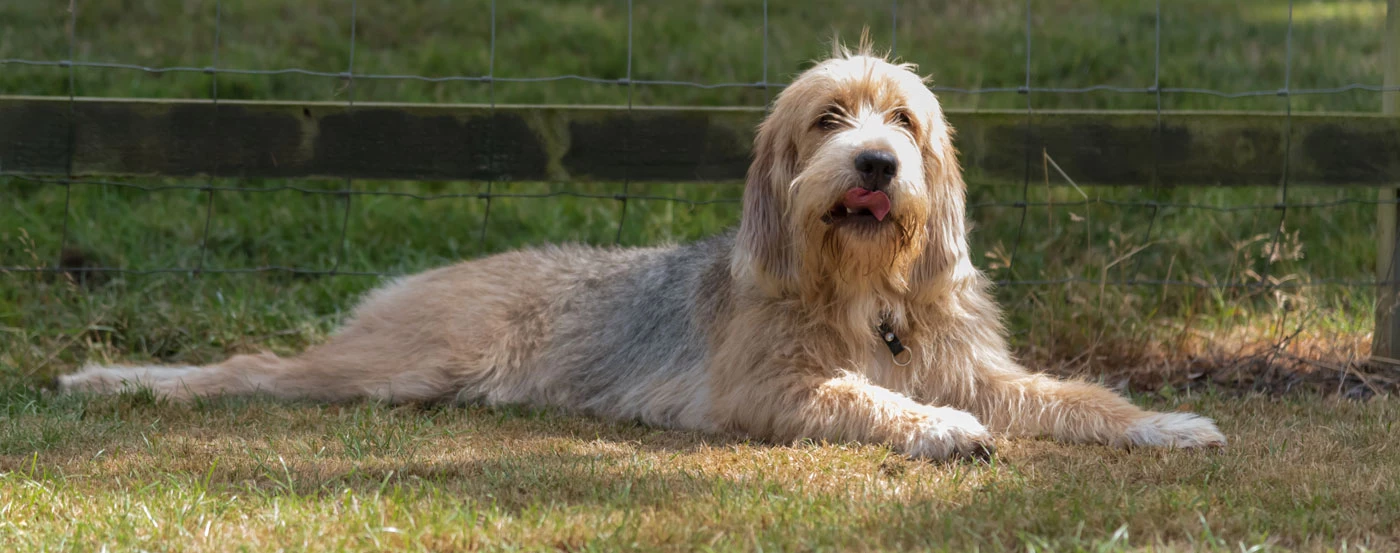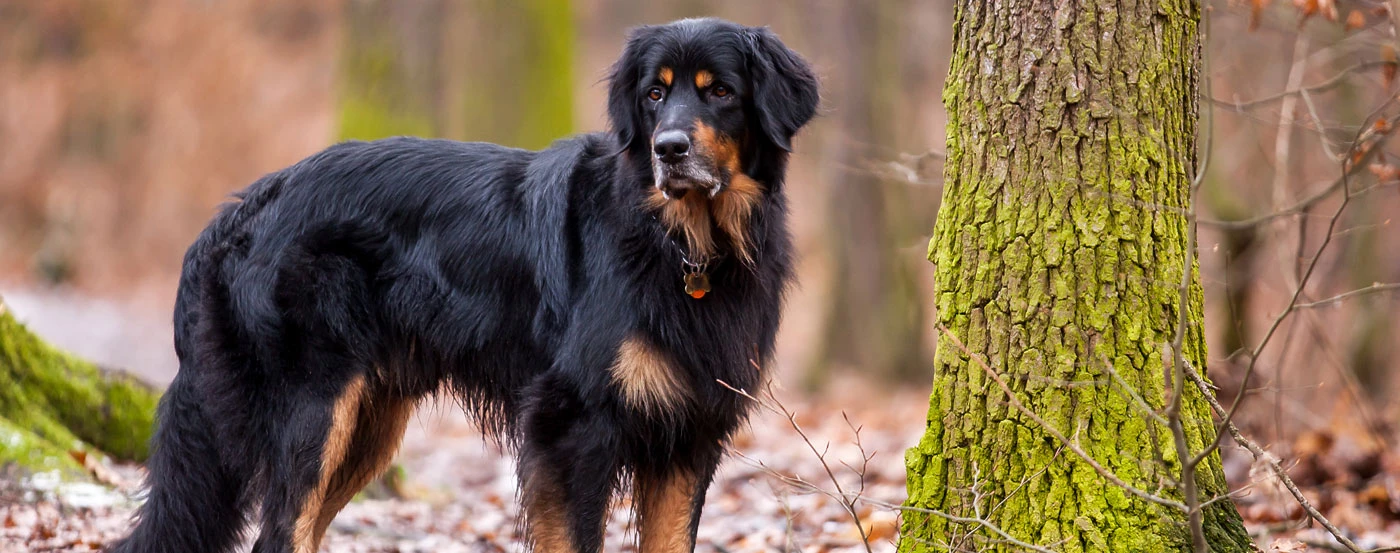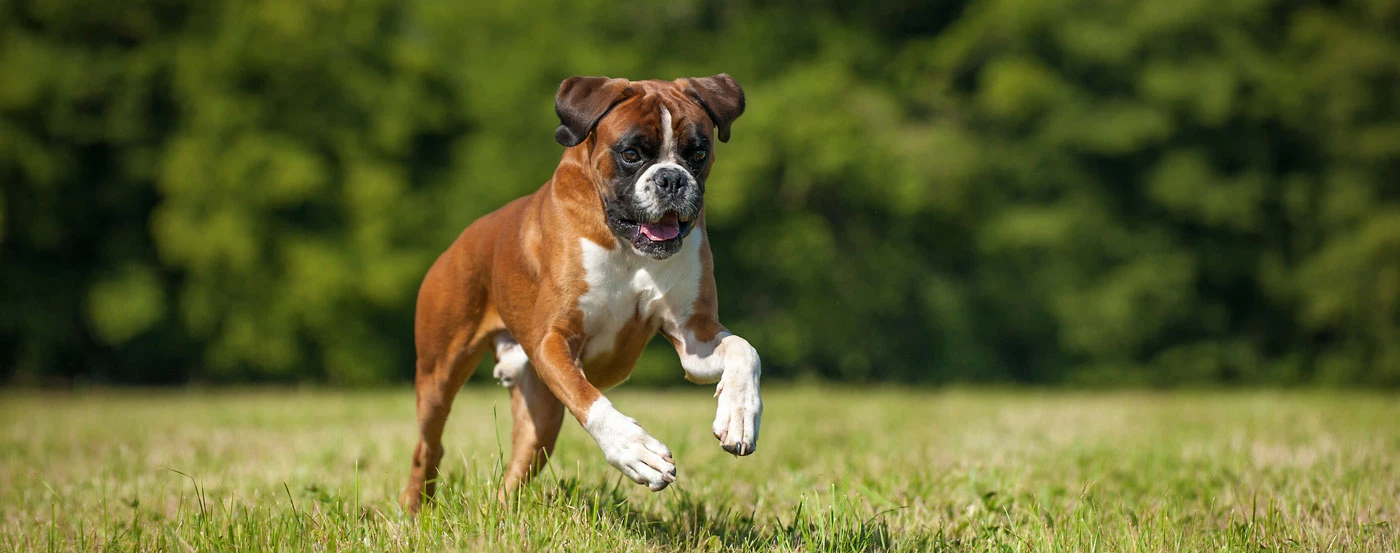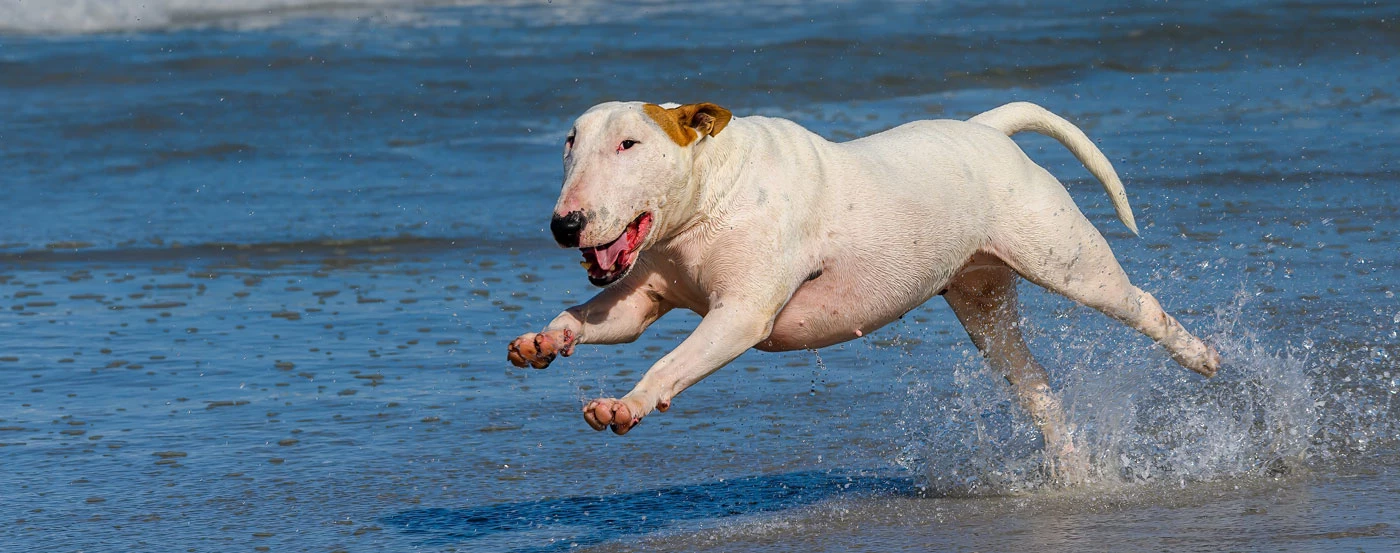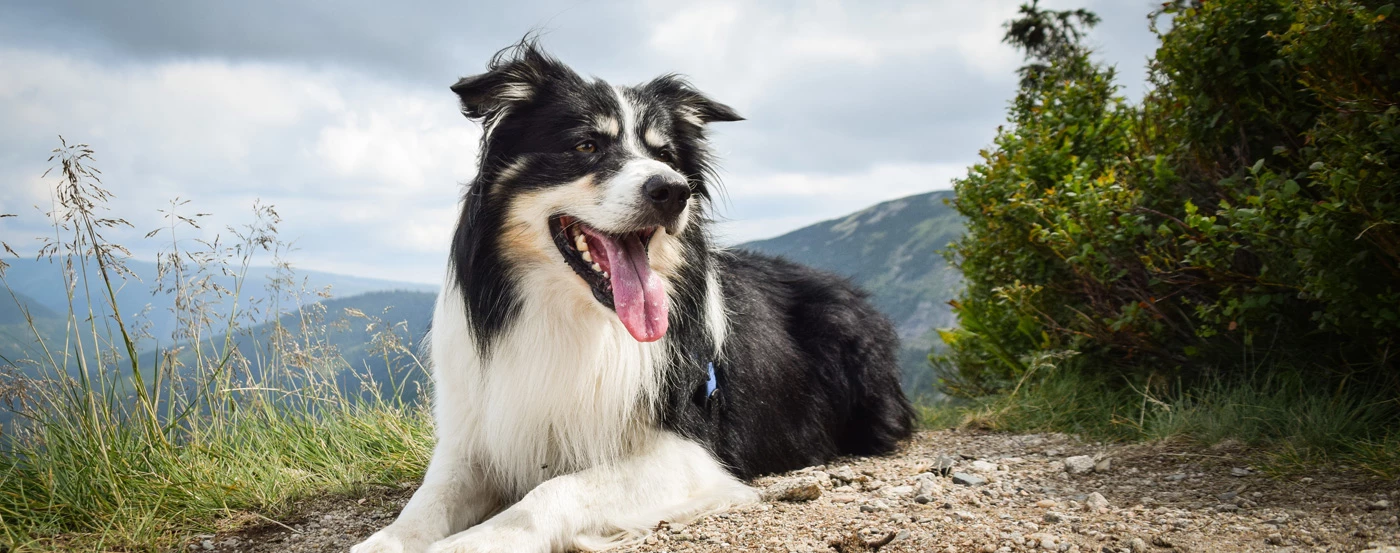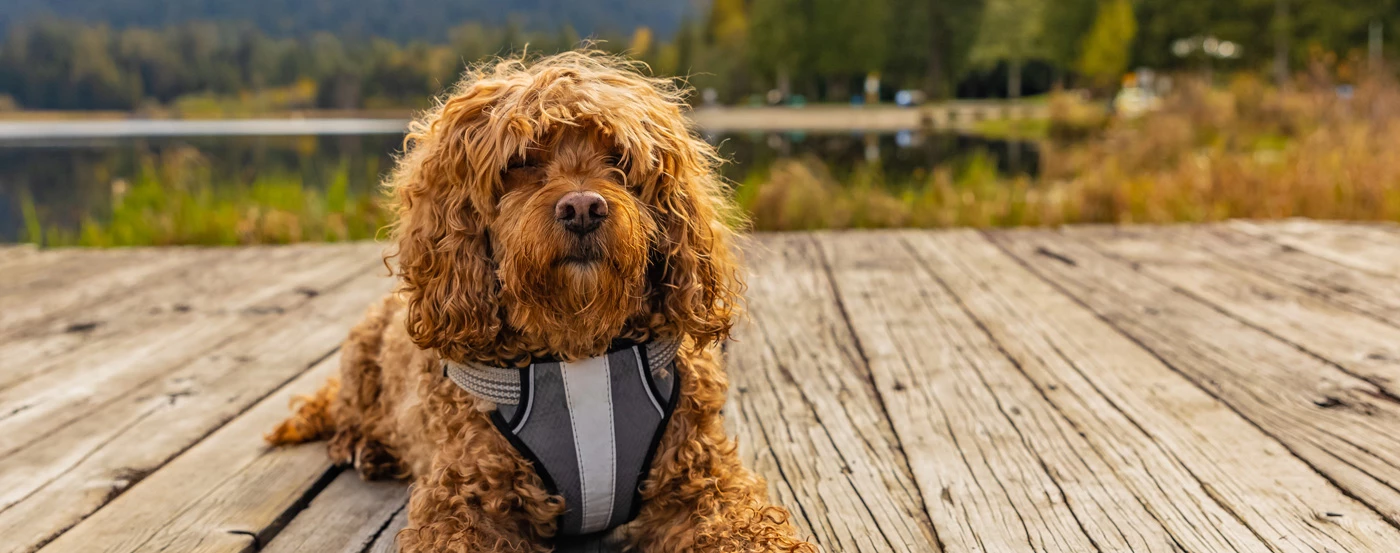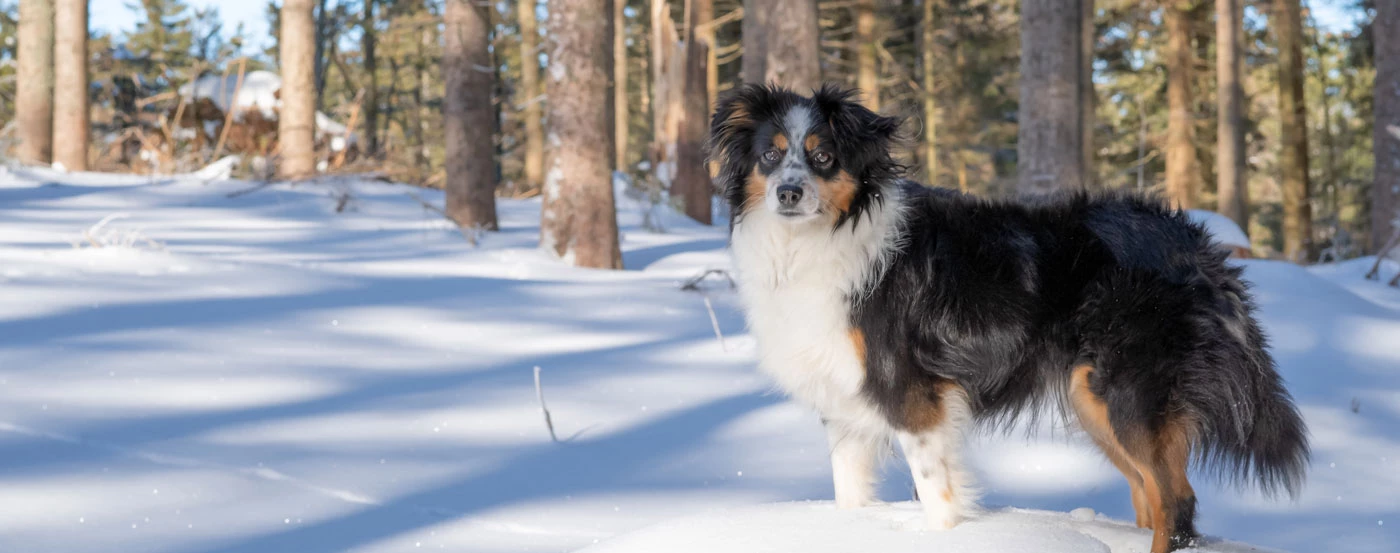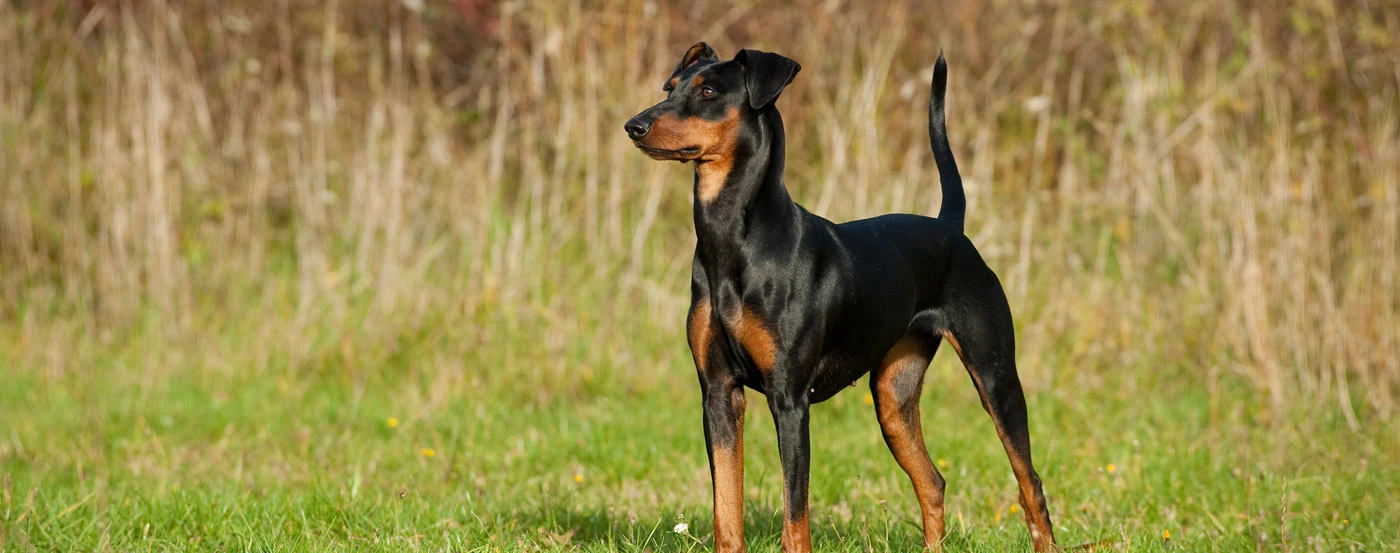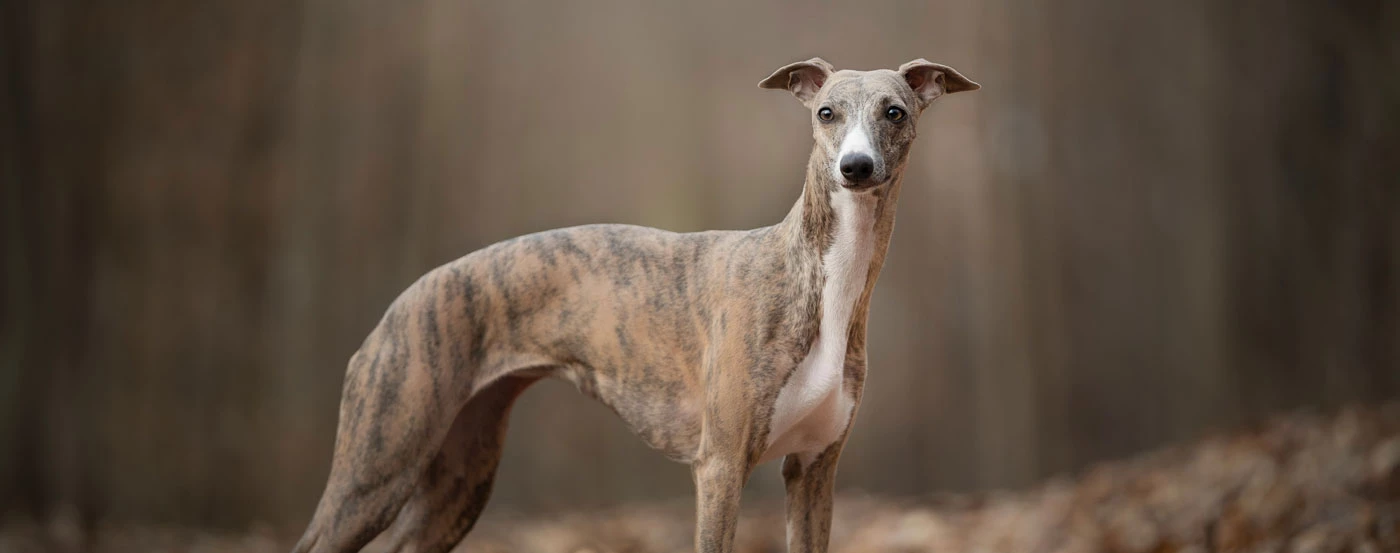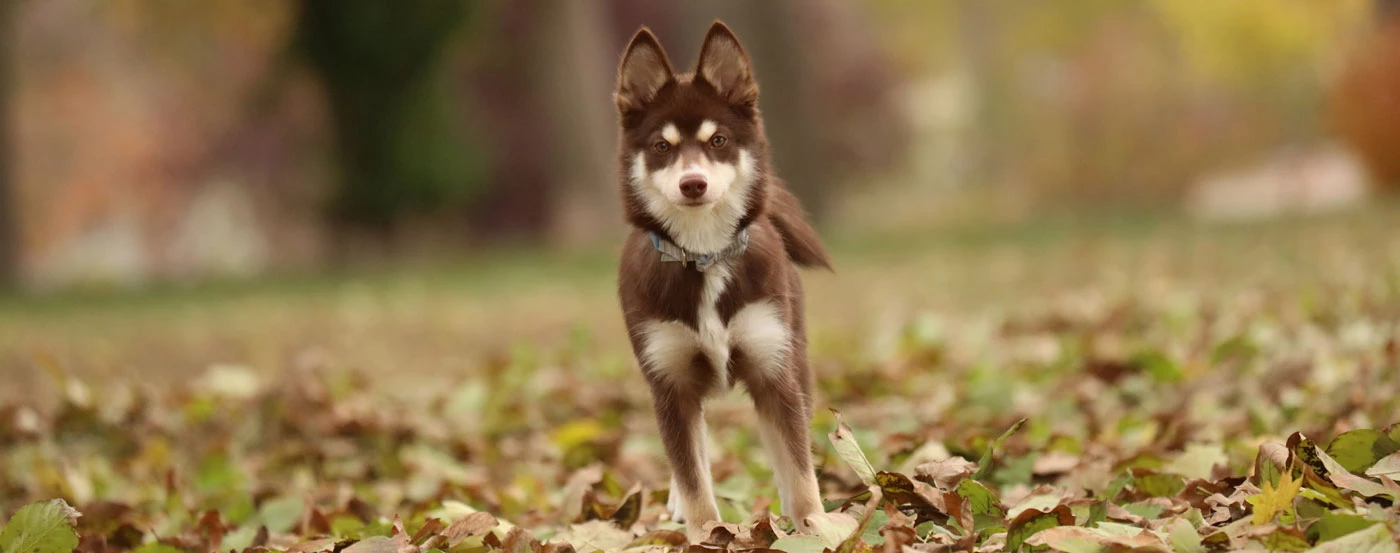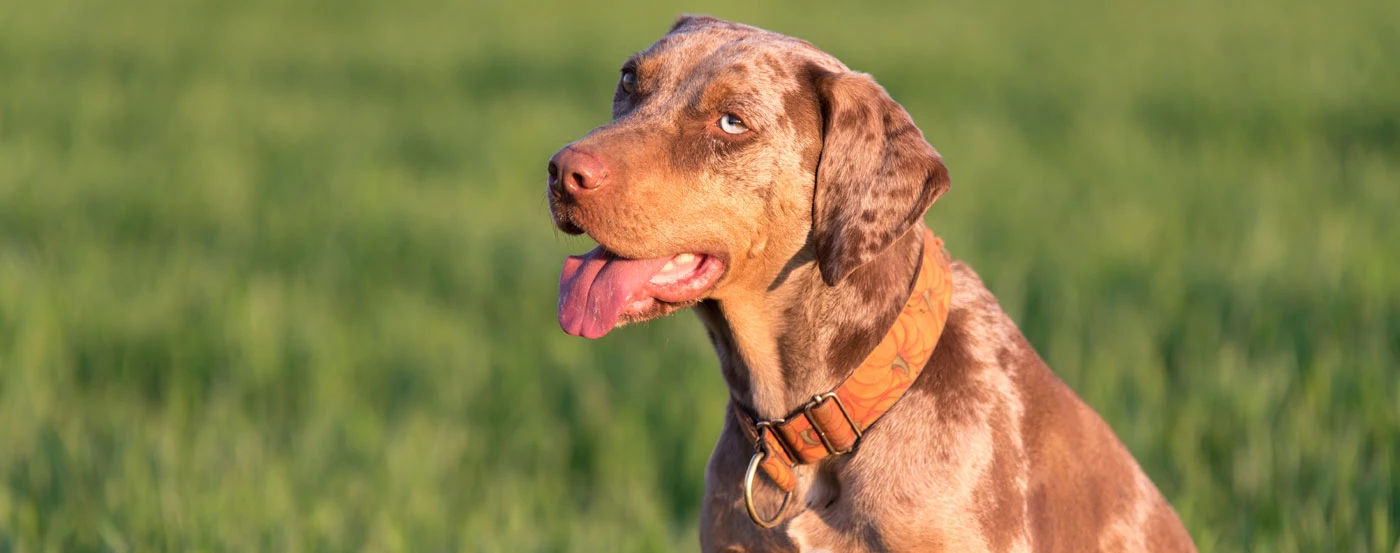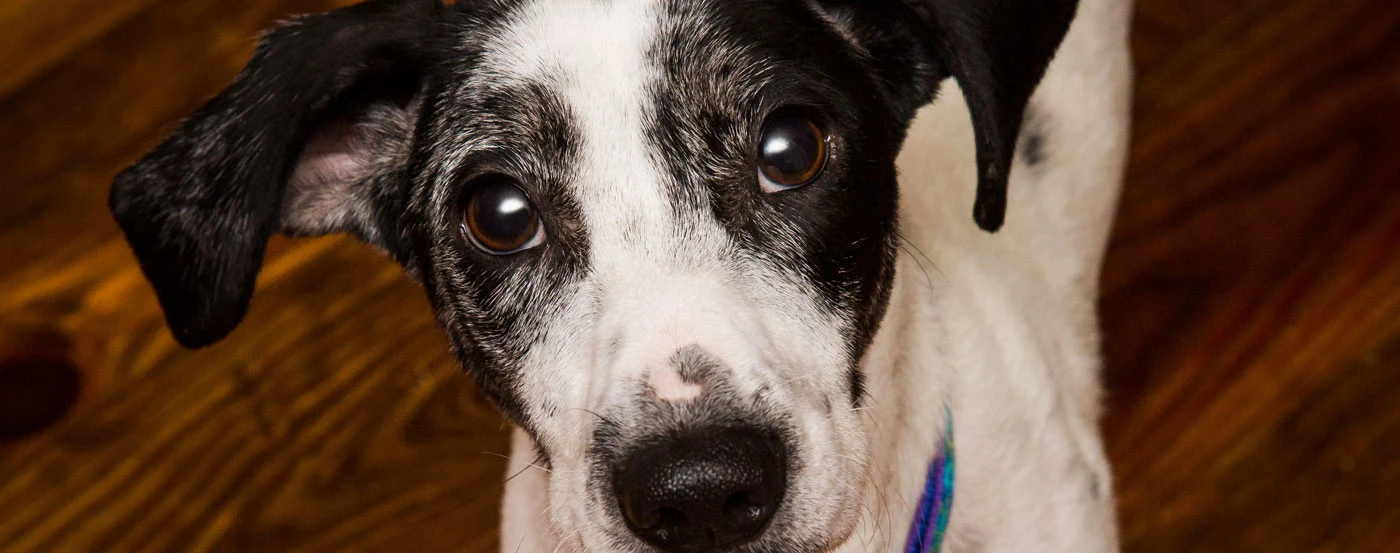About the Flat-Coated Retriever
You'd be forgiven for mistaking a Flat-Coated Retriever for a black Golden Retriever, but they really are a different breed. Flat-Coated Retrievers are a superb companion due to their friendly temperament and striking shiny coat. Considered the Peter Pan of the canine world, these charming dogs are well-known for their perpetually playful natures.
Before you set out to get your new best buddy, let's meet this breed, the Flat-Coated Retriever.
Flat-Coated Retriever Gallery
What is the history & origin of the Flat-Coated Retriever?
In the nineteenth century, landowners and the sporting aristocracy of Great Britain emphasised creating different varieties of working dogs with a defined function. The only role of the Flat-Coated Retriever was to pick up and recover shot game correctly and without harming the flesh.
The Flat-Coat Retriever was once known as the Wavy Coated Retriever. J. Hull, whose Old Bounce and Young Bounce significantly contributed to the development of the Flat-Coat, is credited with creating the breed.
The Flat-Coat originated from a combination of Newfoundlands and several Setters, Sheepdogs, and Water Spaniels. The popularity of Flat-Coated Retrievers peaked during World War I. However, following the war, fierce competition from Labrador and Golden Retrievers almost wiped out the breed many times.
Who are Flat-Coated Retriever dogs best for?
Flat-Coats are best suited to active families that can provide enough vigorous exercise and have enough space in their homes to accommodate this large breed. It is even better if they have other dogs or other pets at home to help them burn off their natural sporting energy.
Because Flat-Coats are an active dog breed, they fare best with owners who understand that they will always be puppies at heart and act as such regardless of age. These purebred dogs make a loving family pet.
How much grooming does a Flat-Coated Retriever need?
Regular grooming is required for your Flat-Coated Retriever. Although they don't need as much maintenance as other breeds, you should still brush their hair, wipe your pup's ears, and keep their eyes free of dirt. Doing this regularly is an important part of dog ownership and it can help keep your dog healthy and strong.
Let's get started with brushing. Flatties have a thick moderately long coat, which should be brushed twice or three times each week to remove any loose hair and avoid shedding. They have two different shedding seasons, one in the autumn and the other in the spring.
Unless the dog becomes really filthy, bathing should be done twice a month. You'll need to assist in washing the hair so that it doesn't go all over the place and create a mess. Bathing your gun dog at least twice a month maintains the hair while preventing the skin below from drying out.
Do Flat-Coated Retriever bark much?
When Flat-Coated Retrievers get anxious, they may bark more than usual, although their barking is often not unduly loud. The majority of Flat-Coated Retrievers don't bark much; extra training is indicated if the dog's barking becomes a major issue and is persistent.
Do Flat-Coated Retriever bite?
It is pretty unusual for a Flat-Coated retriever to growl or bite a human. People can be nipped, chewed, play-bitten, or herded by Flat-Coated Retrievers, and it is a typical puppy activity, not aggressiveness. These bites are not painful, but Flat-Coated Retrievers should be taught through obedience training that nipping and biting are no-nos.
What is the temperament & personality of a Flat-Coated Retriever?
Flat-Coated Retrievers are friendly household dogs that are also effective hunting partners. They are a lively, joyful, loving breed. Due to its everlasting puppyhood, the Flattie is constantly silly and ready to play. Your pup is intelligent and eager to please, yet it may also have a mischievous side.
This delicate breed reacts badly to rigorous training techniques; positive reinforcement, praise, and treats are the most effective training methods.
Flat-Coated Retrievers are bred to be athletic and energetic hunting dogs. However, if they receive adequate outdoor exercise ad mental stimulation, they can adjust well to city life. Due to their working history, they need quite a bit of exercise to maintain good behaviour at home. They thrive in agility training.
What is the weight & size of a Flat-Coated Retriever?
The average height of male flat-coated retrievers is from 58 to 61 centimetres, while the average size of females ranges from 55 to 58 centimetres. Weights for the adult dog vary from 27 to 36 kilograms, with female Flatties much lighter than males.
How much training does a Flat-Coated Retriever need?
Flat-Coated Retrievers are easy to train, and they are eager to please. But its puppy enthusiasm and playful personality may cause training sessions to be disrupted. Training Flatties requires positive reinforcement techniques and a sense of humour.
They are well-behaved with continuous training, although they may always be somewhat mischievous. Early training for a reliable recall and off-leash etiquette is required if you want to field train your Flat-Coat.
The clever Flat-Coated Retriever enjoys advanced instruction, yet they frequently prefer a task to ridiculous stunts. This lively dog sports breed is well-suited for agility, flyball, tracking, retrieval sports, and dock dog contests.
The Flat-Coated Retriever was created as a hunting dog. They perform well once taught, but their playful and young personalities may make training harder than a standard retriever. Despite their playful personalities, Flatties are fantastic hunting companions while hunting upland birds or waterfowl, and the slow-maturing breed will always get the task done.
What are some of the most common health issues for a Flat-Coated Retriever?
Flatties are a healthy breed, however, they are prone to various inherited health conditions, including:
Hip dysplasia
Cancer
Eye issues, such as progressive retinal atrophy and glaucoma
Joint disorders, such as patellar luxation and arthritis
Elbow dysplasia
What is the lifespan of a Flat-Coated Retriever?
The life expectancy of the Flat-Coat retriever is 10 to 13 years.
How much should you feed a Flat-Coated Retriever?
The energetic Flat-Coated Retriever requires between 2 to 4 cups of food daily, and this quantity should be divided across two meals depending on the typical weight and activity level. Divide their food into two meals rather than one huge one since they may quickly gain weight otherwise.
This will also aid digestion and prevent bloating, which is not uncommon in this breed. Movement should therefore be restricted for an hour after eating, and measures may be required for dogs that eat too rapidly.
Always provide your dog with access to fresh water. And give a portion of high-quality, nutritionally-balanced dog food. Inquire with your veterinarian about how much you should feed your dog and if you need to make any particular changes, such as a customised diet for your dog's age or level of activity.
What is the price of a Flat-Coated Retriever in Australia?
The Flat-Coated Retriever is priced between $1,000 and $2,000 owing to its relative rarity and intelligent demeanour. Always pick a reputable breeder or contact a national breed club to be placed on the waiting list.
Pros
- Fetch enthusiast
- Eager to please
- Cheerful tail-wagger
Cons
- Can be jumpy
- Shedding
- High exercise needs
